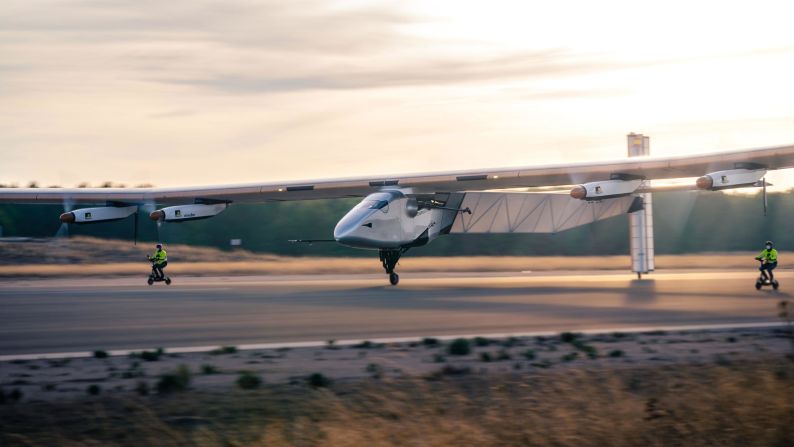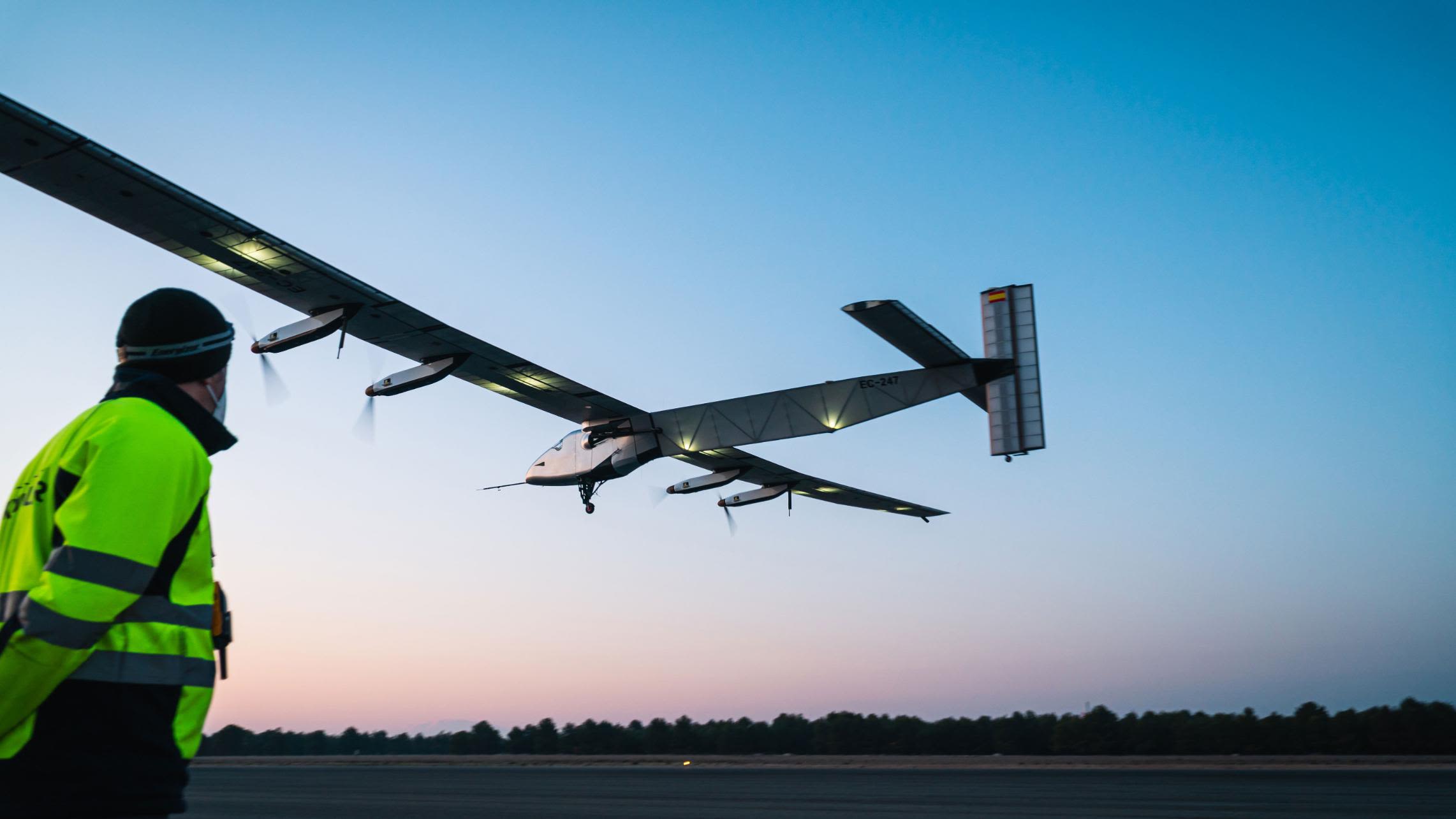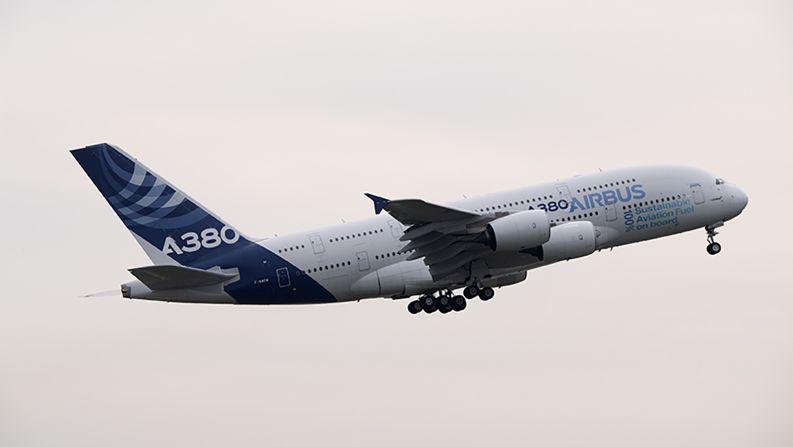
Skydweller Aero aims to produce the world's first commercially viable "pseudo-satellite" -- a solar-powered airplane capable of staying in the sky for months at a time. Skydweller is pictured landing after its first flight, in December 2020. The men on bikes are there to stabilize the aircraft by catching the poles protruding from the wing, a necessary step because of its tremendous wingspan.

Skydweller takes off during a test flight in April 2021. The US-Spanish companyis modifying the existing Solar Impulse 2 plane. Covered in more than 17,000 solar panels, Solar Impulse 2 has set numerous flight records.

In 2016, Solar Impulse 2 circumnavigated the Earth without using a drop of fuel. It's pictured here on July 26, 2016, before landing in Abu Dhabi to complete its 26,000-mile (42,000-kilometer) journey.

Skydweller is just one a number of aircraft being developed that can operate without using fossil fuels. ZEROe is a zero-emission concept aircraft from Airbus.

Airbus plans for three hydrogen-powered, zero-emission aircraft which can carry 100 to 200 passengers. It hopes to launch the first ZEROe aircraft in 2035.

On September 24 2020, ZeroAvia flew the world's largest hydrogen-powered aircraft at Cranfield Airport in England, showing the possibilities of hydrogen fuel for aviation.

While some are exploring hydrogen power, others are testing electric planes. Washington State-based Eviation Aircraft is behind the nine-passenger all-electric Alice aircraft, which produces no carbon emissions.

The aircraft, shown here as a rendering, has a range of 440 miles and is intended for feeder routes. It also comes in a cargo version; DHL Express has ordered 12 slated for service in 2024..

Alice's innovative interior won the "Cabin Concepts" category at the Crystal Cabin Award 2020.

In December 2019, Vancouver-based seaplane company Harbour Air made history with the first all-electric commercial aircraft flight. The de Havilland DHC-2 Beaver seaplane, which was first flown in 1947, was retrofitted with a 750 horsepower magni500 electric engine from magniX.

MagniX made headlines again in June 2020 when AeroTEC's nine-seater eCaravan -- powered by the magni500 electric propulsion system -- became the largest all-electric commercial aircraft to fly.

On March 25 2022, an Airbus A380, the world's largest commercial passenger airliner, completed a test flight powered entirely by SAF -- sustainable aviation fuel -- composed mainly of cooking oil.

While energy sources are still evolving, UK-based Faradair Aerospace is developing a design to squeeze the maximum efficiency out of whichever fuel prevails.

Faradair's 18-passenger BEHA aircraft, made from lightweight composite and shown here in a rendering, can carry a five-ton payload and has a 1,150-mile range.


